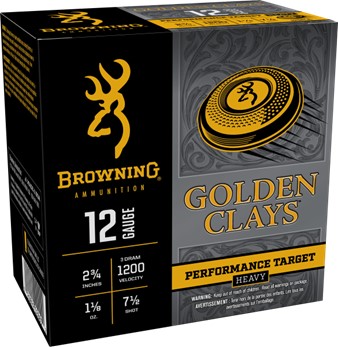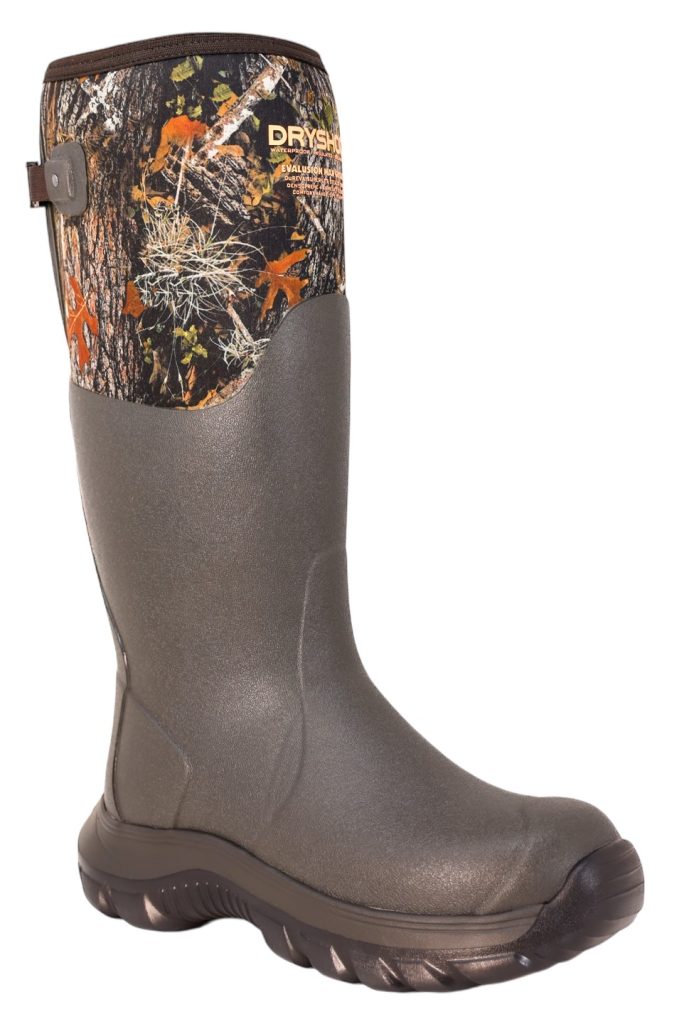Conklin, NY — Dryshod, the new benchmark in performance waterproof footwear for outdoor recreation and occupational use, expands its innovative Evalusion hunting boot series with the introduction of the new Evalusion Max Gusset. With the Evalusion Max Gusset, the world’s lightest waterproof hunting boot is even more comfortable and accommodating for the stealthy hunter and outdoor adventurer.
Shifting clothing requirements due to changes in weather or hunting needs means conventional neoprene boot uppers may be too tight and uncomfortable. Those with larger calves also balk at the often too-tight fit of single-size uppers. The Evalusion Max Gusset solves this problem with its rear gusset and buckle system. The rubber gusset easily expands to provide room for extra clothing layers during cold-weather outings and to accommodate outdoor enthusiasts with more sizeable calves. The adjustable strap can then be secured for a just-right fit to provide all-day comfort, whether sitting in a stand or walking the most aggressive terrain.
Adding to the Evalusion Max Gusset’s exceptional comfort is Dryshod’s DUREVA™ outsole. Weighing nearly a full pound lighter than Dryshod’s already lightweight comparable boots, the DUREVA™ outsole employs a fusion compound that eliminates the need for a secondary rubber sole while delivering maximum stability and energy return to reduce fatigue. What’s more, the multi-lug tread design is both tough and pliable, ensuring high traction on challenging ground and quiet flexing over ground elements to enhance stealth.
Temperature control is always a factor with 100-percent waterproof boots, and the Evalusion Max Gusset comes ready for any climate or activity. Layered beneath the 5mm DENSOPRENE® foam bootie is a four-way stretch breathable Airmesh lining that promotes airflow to maximize insulation during cold weather while minimizing moisture build up during warm, high-activity conditions. The integrated polar fleece lining offers a broad comfort range from -50°F to 65°F.
The Evalusion Max Gusset comes with a Hydrokote™ camo upper that ensures water rolls off the calf pipe, eliminating the soggy uppers typical of most neoprene-style waterproof boots. Additional features include a natural rubber shell, roll-down calf pipe, steel shank, and a sturdy tuck board sub-sole.
For more information on the new Evalusion Max Gusset or to see the company’s full line of waterproof footwear, visit DryshodUSA.com.
About Dryshod
The team behind Dryshod was the first to develop the bootie-style neoprene-and-rubber boot category over 20 years ago. Now they have elevated protective footwear performance through the application of advanced materials, field-proven construction techniques, and purpose-built designs—all to ensure Dryshod consumers receive the highest quality, best performing, and most comfortable waterproof boots for any task or adventure. Dryshod’s mission is to provide farmers, hunters, outdoor enthusiasts, and anyone who works or plays in wet, sloppy, and cold conditions with the most durable, reliable and comfortable 100-percent waterproof footwear available. To learn more about the Dryshod Waterproof Footwear difference, visit DryshodUSA.com.











